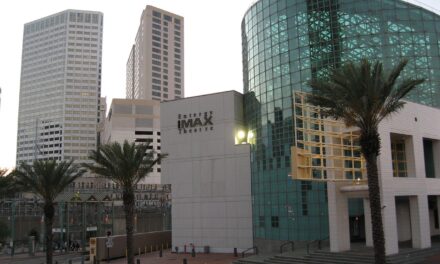Old Bridge Township, located in Middlesex County, New Jersey, has a centuries-old history.
From its early days as a Lenape settlement to its development as a modern suburban township, Old Bridge has a rich and varied history worth exploring.
Table of Contents
Indigenous Beginnings
The Lenape People
Long before European settlers arrived, the Lenape people inhabited the area now known as Old Bridge Township.
With their sustainable way of life based on farming, hunting, and fishing, the Lenape demonstrated remarkable resilience, which continued until European colonization dramatically changed the landscape.
European Settlement
Dutch and English Colonization
The area saw its first European settlers in the late 17th century.
Initially, Dutch explorers established trading posts and small settlements, introducing new trade goods and practices to the region. The region later came under English control, leading to increased settlement and agricultural development, but also to significant changes in the traditional way of life of the Lenape people.
Early Development
Old Bridge was part of the larger South Amboy Township.
Farms and small villages dotted the landscape, with agriculture forming the very backbone of the immediate local economy. The construction of early roads and bridges facilitated trade and communication with nearby communities.
Formation of Old Bridge Township
Establishment
Old Bridge Township was officially established in 1869, separating from South Amboy Township.
This separation resulted from the growing population and the need for a more localized administration to cater to the residents’ diverse needs.
The name “Old Bridge” was derived from a wooden bridge built across the South River, distinguishing it from other nearby communities.
Industrial Growth
The late 19th and early 20th centuries saw industrial growth.
Clay deposits in the region led to the establishment of brick and tile manufacturing, which provided employment and boosted the local economy.
The 20th Century: Growth and Suburbanization
Population Boom
Post-World War II, Old Bridge experienced a significant population increase.
Returning veterans and their many families flocked to the area, attracted by affordable housing and the suburban lifestyle and this period marked the transition from a primarily agricultural community to a residential suburb.
Infrastructure Development
The 20th century brought significant infrastructure improvements.
The construction of new schools, parks, and public facilities supported the growing population. Major roads and highways, such as Route 18 and the Garden State Parkway, improved connectivity and spurred further development.
Modern Old Bridge Township
Economic Diversification
Old Bridge has successfully diversified its economy beyond its agricultural and industrial roots, hosting various businesses and industries that contribute and give to an expansive local economy.
The township now hosts various businesses and industries, contributing to a robust local economy.
Community and Culture
Old Bridge is known for its strong sense of community and vibrant cultural scene.
Annual events like the Old Bridge Day celebration bring residents together and foster community spirit. The township also offers numerous recreational facilities, including parks, sports fields, and community centers.
Fun Things to Do in Old Bridge Township
Recreational Activities
- Cheesequake State Park: Offers hiking, fishing, and picnicking opportunities in a beautiful natural setting.
- Old Bridge Waterfront Park: Provides stunning views of the Raritan Bay and is perfect for a relaxing day outdoors.
Cultural Attractions
- Old Bridge Historical Society: Learn about the township’s rich history and heritage through exhibits and programs.
- Performing Arts Center: Enjoy local theater productions and concerts showcasing community talent.
Q&A: Understanding Old Bridge Township’s Legacy
Q: How did Old Bridge get its name?
A: Old Bridge was named after a wooden bridge built across the South River, distinguishing it from nearby communities.
Q: What industries historically shaped Old Bridge’s economy?
A: Agriculture, brick and tile manufacturing, and later suburban residential development have all played significant roles in Old Bridge’s economic history.
Q: How did post-World War II developments impact Old Bridge?
A: The population boom and suburbanization transformed Old Bridge from a rural community into a thriving suburban township, leading to significant infrastructure and housing developments.
Q: What recreational facilities are available in Old Bridge?
A: Old Bridge offers a range of recreational facilities, including Cheesequake State Park, Old Bridge Waterfront Park, and various sports fields and community centers.
Q: How does Old Bridge celebrate its community spirit?
A: Annual events like Old Bridge Day and various cultural and recreational activities foster a strong sense of community among residents.
Q: What future developments are planned for Old Bridge?
A: Future plans include continued economic diversification, infrastructure improvements, and community development projects to enhance residents’ quality of life.
The Future of Old Bridge Township, New Jersey
As Old Bridge Township continues to change over time, it remains steadfast in its commitment to preserving its history while embracing New Jersey’s modern advancements.
This dedication ensures a bright future for its residents, standing as a testament to its community’s enduring spirit and resilience.





